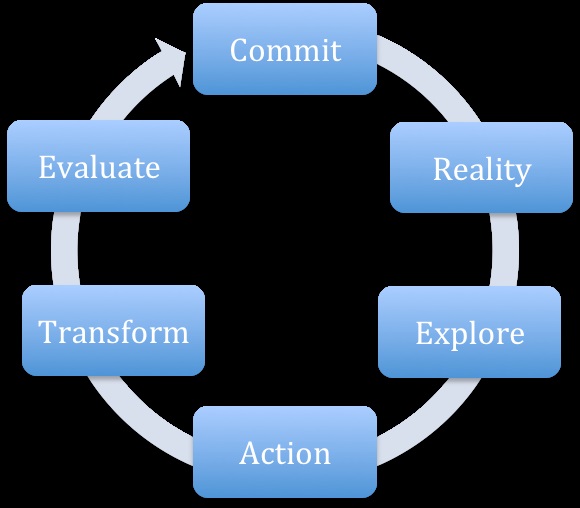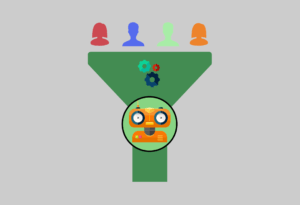
If you’re looking to improve your coaching skills, one of the best things you can do is to create coaching model. By doing so, you’ll be able to more effectively communicate with your clients and help them reach their goals.
Creating a coaching model doesn’t have to be complicated or time-consuming – but it can make all the difference in your practice. If you’re not sure where to start, here is a guide on how to create coaching models.
How To Create Coaching Models: The Ultimate Guide
The first step is to create a coaching model that is tailored to your organization’s specific needs. This will help ensure that everyone is on the same page and that the coaching process is as effective as possible.
To do this, you will need to consider what your organization’s goals are and what kind of support your employees need to reach those goals.
Once you have a good understanding of these things, you can start to create a coaching model that will work best for your team.
What are Coaching Models and Why are they Important?
For one thing, a coaching model helps to establish what the client is trying to achieve. A coaching model is a process that you can use to guide your clients through your sessions. This type of model provides a clear structure and framework that you can repeatedly use while still being able to adjust for each individual client.
Additionally, a coaching model can help to establish what the client is hoping to achieve from the sessions.
A coach helps the client define their goals, and then works with them to achieve them.
Most coaching models ensure that you will have a goal to aim for before you begin working with a client. This is important because it can be difficult to make progress without a clear goal in mind. Having a goal will help you and your client focus on what needs to be done in order to achieve success.
A coaching model can help you understand your client’s current situation by providing context about why they sought out coaching in the first place. This can include understanding what obstacles they are facing and how they got to their current state. With this information, you can better assess where your client is heading and make necessary adjustments.
With a coach, you can evaluate the path that your client is on, and if necessary, make the necessary adjustments.
A group coaching model can help you to identify the steps necessary to achieve a milestone or goal, as well as any potential roadblocks that might stand in your way. By taking the time to consider all of these factors, you can set yourself up for success and make progress towards your goals.
Coaching methods can vary, but many of them share common principles.
If you want to be a successful coach, it is important to have a good structure for your coaching sessions. This will help you produce consistent results for clients and build a successful coaching business. Without a good structure, it will be difficult to run smooth and effective coaching sessions. Therefore, it is important to find a coaching model that works well for you and your coaching business.
No matter what type of coach you are, there is a coaching model that will fit your style and needs. Each model offers its own benefits, so it is important to find the one that works best for you and your clients.
How to Build a Successful Coaching Models
A recent survey has found that the effectiveness and success of an organization’s sales coaching programs and methods have a direct correlation to the overall success of the organization. However, many sales managers still feel that their coaching programs are not very effective.
Step #1. Commit
Once you commit yourself to something, the universe conspires to help you. Things happen that wouldn’t normally have happened.
You begin your journey towards self-improvement with the desire to change your circumstances, whether that is a deep-seated need or a nagging feeling that something is not quite right.
The changes you want to make could be big or small, from working out once a week to starting a business.
You may not be entirely sure about your goals, or you may not know how to reach them, but you have a burning desire to make a change and are willing to commit to it.
As your coach, I am committed to supporting you on your exciting journey of personal transformation. I will provide you with a safe, trusting and confidential space in which to fully express yourself, while upholding all the ethical and professional requirements of the coaching profession. Together we will establish what you want to achieve, the scope of coaching and the ground rules for working together so as to clarify our expectations.
Sample Questions:
What brings you here today? Tell me a little about your coaching experience. What are your goals for this coaching relationship? How committed are you to making a change?
A sample coaching model created by Annie Yi-ju Huang, a spiritual coach from Australia.
Instead of asking what the world needs, you should instead ask what makes you feel alive. Then, you should pursue that. Because what this world really needs is people who are truly living.
Because what this world really needs is people who truly live.
The CREATE coaching model is about changing not only your mindset and your actions, but also who you are.
As your accountability partner, I will help you create a safe, supportive environment where you can commit to changing, assess your current circumstances, envision your future, take action, realize your full potential and become the version of yourself you have always envisioned.
This approach requires your full commitment and action in the process. You are responsible for the outcomes of your actions and decisions.
You will not be alone in this process. You will have an equally committed growth partner by your side who will motivate, support, and challenge you to reach your highest potential.
Step #2. Reality Check
Take action now. Do what you can with what you have.
You can do anything you set your mind to! Arthur Ashe.
I will listen intently to your situation and ask you relevant questions about it in order to fully understand your current situation.
As you learn more about your values, beliefs and behaviors, you will also begin to explore how they influence you.
You have the opportunity to choose whether or not to align your current reality and future actions with these values and beliefs.
Sample Questions:
What do you want to focus on today? What outcome do you want to achieve by the end of the session? How would you know when you have achieved it? What will that look and feel like? How does it impact you and others?When I am able to breathe deeply and evenly, it helps me to relax. How does it make you feel? What is your inner dialogue in that situation. What is holding you back? What is it costing you to continue holding back?
Step #3. Explore
Only those who will take risks can ever discover just how far they can go.
Let’s explore your end goal and the many ways to achieve it.
I encourage you to consider all the possible options and choose the one that best aligns with your values.
I help clients create a vision for their business, set goals that are specific, measurable, attainable, relevant, and time-bound, and build structures that support their goals.
Your strengths, experiences and skills will be explored in order to build your confidence and capability to tackle your goals.
As you raise your awareness, you’ll begin to see a world full of possibilities. You have the potential to achieve great things!
Sample Questions:
What does your future hold? Will this help get you there? What are the pros and cons? What factors are you considering? What brings you joy and fulfillment? What energizes and motivates you? What do you value in life and about yourself?
Step #4. Action
A year from now you will wish you had started today. -‐ Karen Lamb
You understand the importance of taking actions to reach your desired outcome, and you have taken many actions but they do not seem to yield the results you want. You may need to change your approach or try new methods to achieve success.
As your coach, I will support you every step of the way. I know that change can be hard, but I promise that I will be there for you every step of the way.
You are willing to take the first step towards your desired outcome and are aware of the hard work and sacrifices that you need to take. You are also aware of the possible obstacles and setbacks.
I will be your biggest fan, motivating and encouraging you to take action. With your permission, I will hold you accountable for the promises you make to yourself and to the world. I want to fill you with hope and enthusiasm so that you can’t wait to jump in and get your hands dirty. Let’s achieve great things together!
I hope this fills you with enthusiasm and excitement so you can’t wait to get started!
When you take consistent action towards your goals, you build up confidence and momentum. Eventually, you become unstoppable!
Step #5. Transform
You gain strength, courage, and confidence by every experience in which you really stop to look fear in the face. You must do the thing you think you cannot do. -‐ Eleanor Roosevelt
You become stronger, braver, and more confident every time you face your fears. You have to do the thing that scares you the most.
-‐ Eleanor Roosevelt.
By consistently taking specific, intentional action, you not only transform your environment, but you also change the person you are. You integrate your values into your daily life and habits.
You are very in tune with your feelings, thoughts, and behaviors. You usually have control over them instead of feeling controlled by them. This allows you to stay present and avoid operating on autopilot mode most of the time.
You develop great trust in yourself as a whole, creative and resourceful person and in your ability to achieve your desired outcomes and overcome the obstacles on your way. You become more confident in your ability to handle whatever comes up and you feel better equipped to take on challenges.
Sample Questions:
What has changed since we started our coaching journey? I have felt more confident in myself and my abilities. I have been able to take on new challenges and succeed. My relationships have improved and I have been able to communicate better. I feel like I can sustain the new change because I have the tools and support that I need.
The benefit of Coaching Models
A coaching model can help to provide a consistent framework for the flow of conversation during a coaching session. This can be helpful in ensuring that the session has a clear purpose and direction. Additionally, a coaching model can help to ensure that all-important topics are covered during the session.
It gives you a system that guides the process as you coach someone. Having this framework and a flow for a coaching session will help ensure you stay focused and better able to manage the coaching interaction.
It also ensures all of the necessary steps are covered.
Conclusion
If you’re looking to improve your coaching skills, creating a coaching model is a great way to start. By doing so, you’ll be able to more effectively communicate with your clients and help them reach their goals. So if you’re not sure where to start, you can refer to this guide on how to create coaching models.
[/sc



